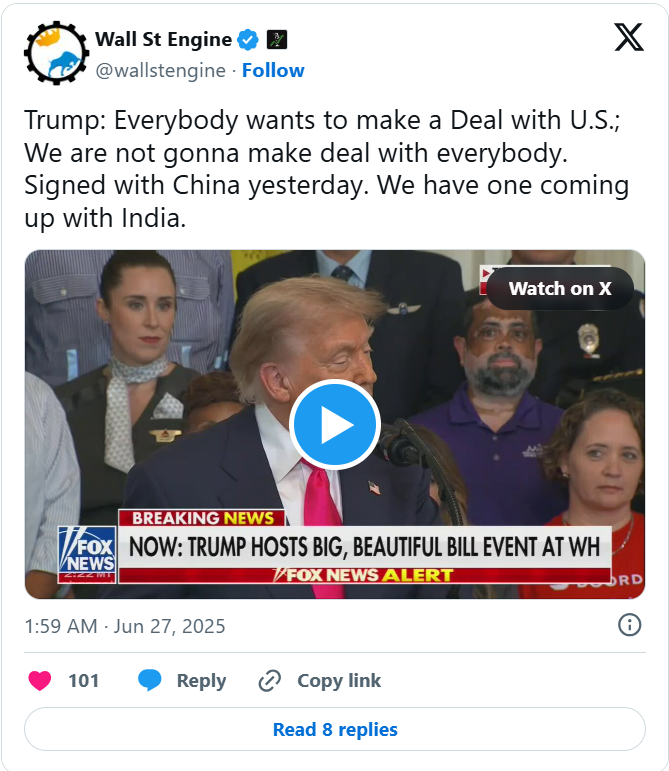The United States and India appear to be making significant progress toward a landmark trade agreement, with U.S. President Donald Trump recently indicating that a “very big” deal could be announced soon. This development follows the signing of a major trade pact between the United States and China, suggesting a renewed focus on strengthening global trade relationships.
Speaking at the White House during the “Big Beautiful Bill” event, President Trump emphasized the scale and potential impact of the anticipated India-U.S. deal. “We’re working on a very big one—maybe with India,” he said. “Where we’re going to open up India. In the China deal, we are starting to open up China,” he added, signaling the possibility of greater economic cooperation and market access between the two democratic nations. https://x.com/wallstengine/status/1938333774267449665

While exact details of the proposed deal have yet to be publicly disclosed, sources familiar with the negotiations suggest that it could encompass a wide range of sectors. These include digital trade, agricultural goods, tariffs, electronics, pharmaceuticals, market access, and defense-related supply chains. If finalized, the agreement could significantly reshape the bilateral trade landscape and boost economic ties between Washington and New Delhi.
Currently, trade negotiations are ongoing in Washington, led by India’s Chief Trade Negotiator Rajesh Agarwal. The talks aim to bridge gaps on critical issues and establish common ground on sensitive sectors. Both countries are said to be engaging constructively, with efforts focused on creating a mutually beneficial framework.
Agriculture has emerged as one of the most challenging areas in the discussions. The U.S. is pressing for greater access to India’s agricultural markets, particularly for products like maize and soybean. However, India remains cautious, especially regarding genetically modified crops, which are more widely accepted in U.S. agriculture but face resistance in India due to health and environmental concerns.
On the U.S. side, optimism remains high. U.S. Secretary of Commerce Howard Lutnick recently commented that the two countries are in a “very good place” and expressed confidence that an agreement could be reached in the near future. His remarks suggest that both sides are aligned on several key principles and may be close to resolving remaining issues.
India, however, continues to emphasize that any agreement must serve its national interests. Union Commerce Minister Piyush Goyal has underlined that India will not accept a deal that compromises its economic sovereignty or strategic priorities. “We are looking for a fair, balanced, and equitable outcome,” he reiterated.
As one of the world’s fastest-growing economies, India holds increasing importance for the U.S. in terms of trade, investment, and geopolitical strategy. A successful trade deal would not only enhance bilateral relations but could also send a strong message about the value of democratic economic partnerships in a shifting global order.
With high-level talks intensifying and both sides showing signs of flexibility, observers are hopeful that a breakthrough could be just around the corner. The coming weeks may prove crucial in determining whether the long-discussed India-U.S. trade pact finally becomes a reality.








